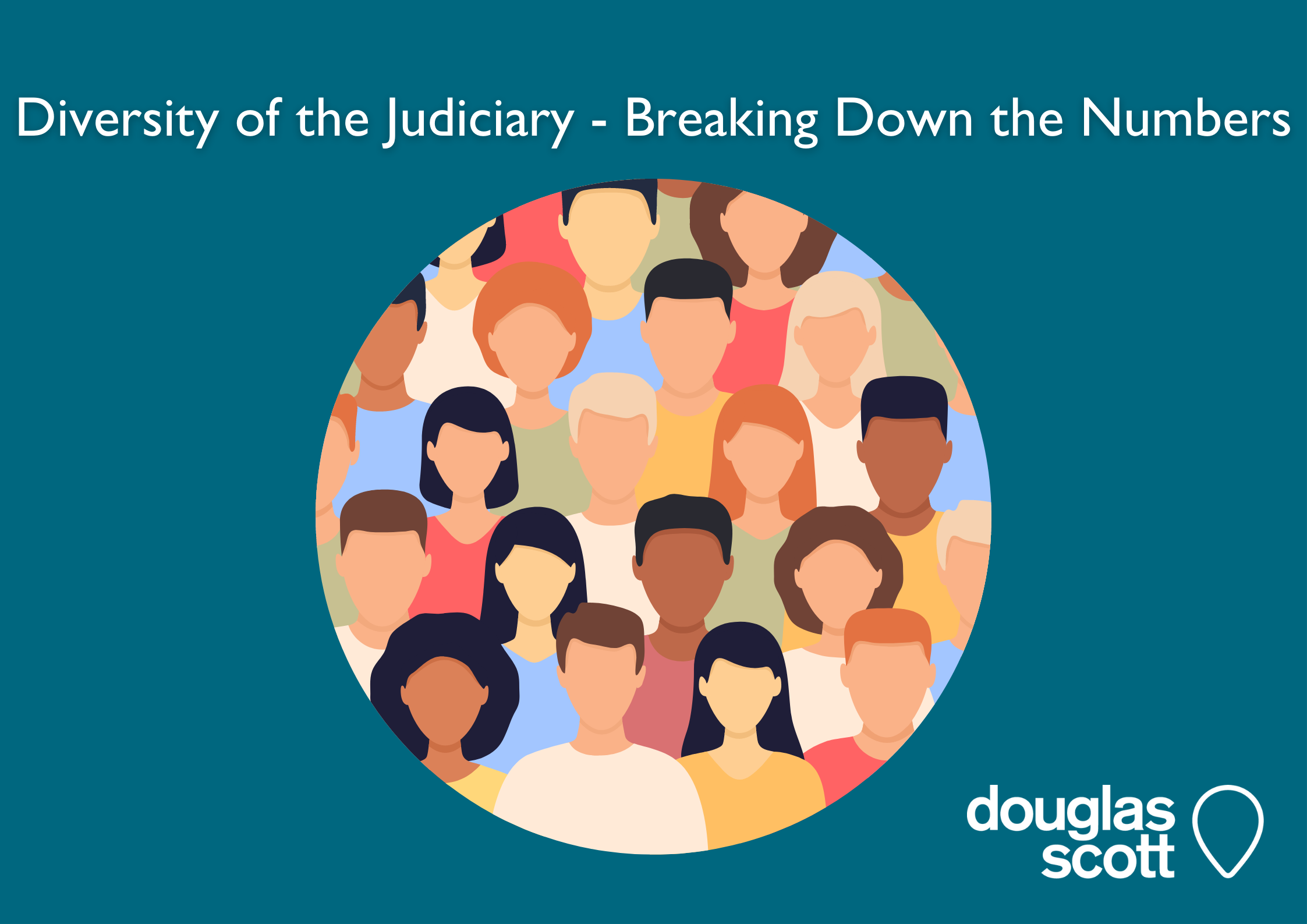Diversity of the Judiciary - Breaking Down the Numbers
Posted in Latest News on 1 Aug 2023

Recently, the Ministry of Justice has released its yearly report on the Diversity of the Judiciary. This is designed to examine just how diverse the courts and legal sectors are, as part of attempts to make law and the courts more accountable and transparent.
The 2023 reports have a lot of interesting statistics about how diverse the workforce is, and we feel like it is worth having a look and seeing what interesting things we can draw from it.
In terms of gender, the report seems clear that there are now more women in more roles across the board. Women constitute, according to the statistics, 40% of barristers, 53% of solicitors, and 77% Chartered Legal Executives. Each profession has shown a gradual increase across the most recent decade, probably driven by the desire to boost women into high profile roles across society and reduce the gender pay gap. However, there is one interesting point in the data: men still have a higher proportion of PQE than women, and, as such, men still dominate the most senior roles. This may, of course, change in years to come, as the market grows and develops, and as women keep rising to senior positions. However, it does show that there is still work to be done to achieve a greater parity between men and women. Certainly, it is true that our Douglas Scott Salary Survey saw a higher proportion of female respondents than male, which may show that women are moving roles and positions as they build up those vital years of experience. Things look better regarding judicial appointments and judicial office holders, both of which show a great increase in recent years. 51% of recommendations in legal judicial exercises are women, and 50% of these are eligible for judicial appointments, showing an equal balance between men and women. Considering how traditionally male dominated the judiciary has been perceived, it is clear to see that a stronger and more equal balance is being struck with regards to gender.
Another key representation area that is showing a greater increase is ethnicity. Over the last decade, there has been a gradual increase across the three main surveyed sectors (barristers were 16%, solicitors were 19%, and charted legal executives 11%), with the statistics for each sector roughly in proportion to the relevant working population identified in the 2021 census. There were some areas that showed a greater proportion – those who identified as Asian or Asian/British solicitors was 12% (society average was 9%), and mixed ethnic barristers was twice as high as the national average. Like with gender factors, however, the more senior roles are lower in comparison to their white colleagues, with black and black/British individuals less represented in senior roles in comparison to junior roles in all three professions, and Asian and Asian/British individuals represented in two of the three. (The outlier was solicitors, which was equal.) In terms of judiciary selection, things are once again looking better: in terms of the eligible pool and in terms of recommendations, the stats were at 16%. However, when you break these stats down further, as each stage progresses, the numbers reduce even more. The report doesn’t contain detailed statistics on this process, which might be to do with confidentiality or simply due to the vast amounts of data. It is clear, though, that trying to get a diverse ethnic range of top judicial roles is taking its time, even though, in terms of junior roles, this group are represented well in comparison to the national average for ethnically diverse groups.
The data from this report is exhaustive, and we will return to it, as it does make for interesting reading. However, there is plenty to be positive about – the legal and judiciary sectors are becoming more diverse, both in terms of gender and ethnicity. It is clear, however, there is still work to do, especially at a senior level where there’s still a greater lack of ethnic and gender diversity. However, in comparison to where the industry was a decade ago, it is a vast improvement, and something to be celebrated.